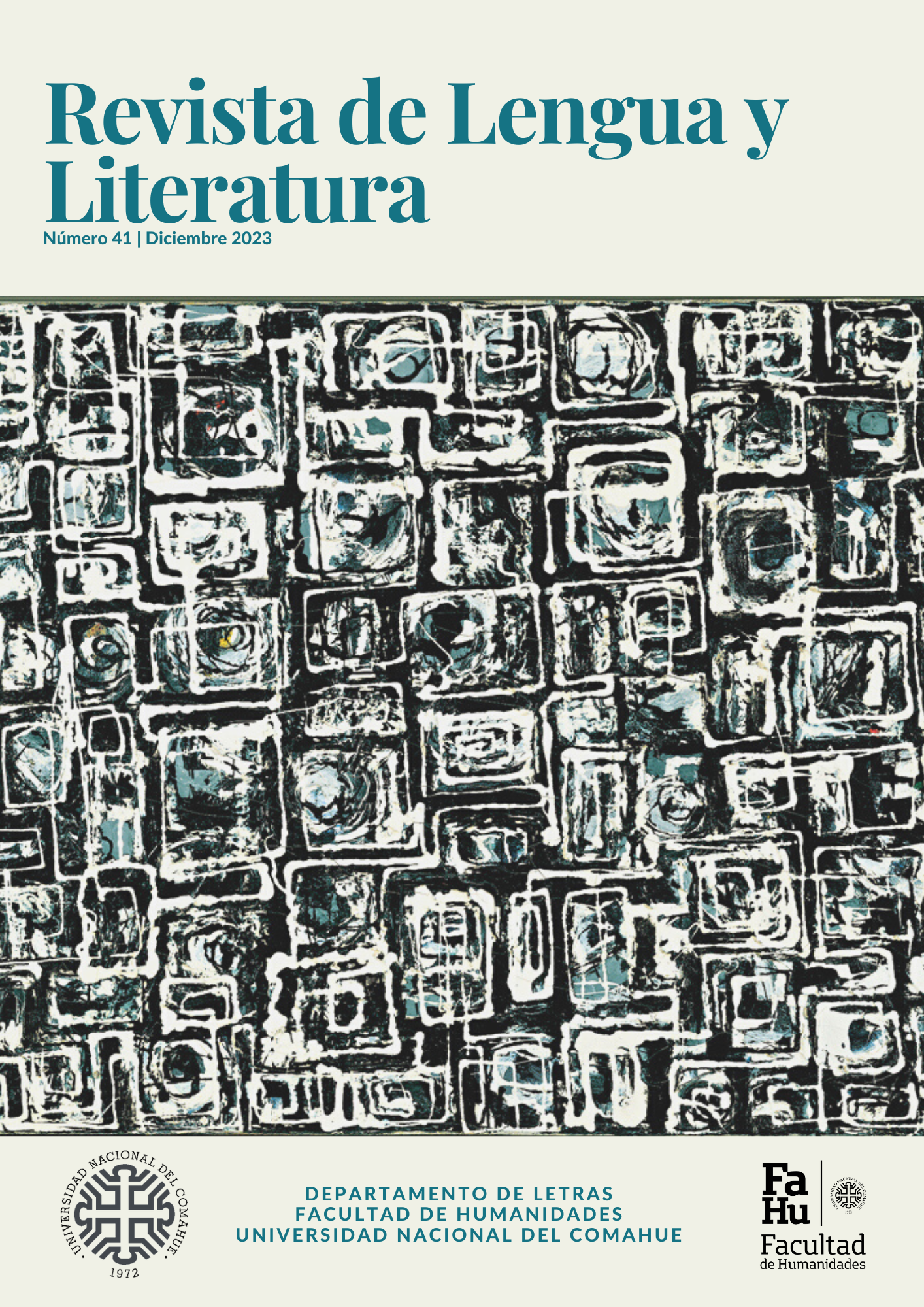Swann in Love and The Kreutzer Sonata: creation and unproductiveness
Keywords:
Tolstoi, Proust, Jealously, Imagination, UnproductivityAbstract
We can understand)that what gives life and meaning to the space of jealousy is the figure of the jealouspersonand the dialogue withhimself, as it is pointed out by Monneyron inL'écriture de la jalousie(1997) in reference to Daniel Lagache, «le monde de la jalousie est le monde personnel du jaloux» (14)[the world of jealousy is the personal world of the jealous person]ßesto no estaba en el abstract, sí en el resumen. From acomparative readingofSwann in Love(1913) by Proust andThe Kreutzer Sonata(written between 1887 and 1889) by Tolstoi,we are interested in exploring)the course of the imagination as acreator of scenes and feelings, and therefore, of the jealousy itself,inthe characters of Swann and Pozdnyshev. This process results in an empty conclusion as the truth that is enclosed in both character’s fictional storiesnever leavesthisplane:adultery isnotproven.Inthis paperwe will begin with a contextual overview of the origin of the figure of the jealous person in both works. Within the following sections we will establish links betweenunproductivityand the imaginative andthuscreative constructions of the jealous person: in the first instance, from the creation of relationships between the desired women and other people and, secondly, from thebeloved idealization (en este caso, traduje literalmente lo que está en el resumen:"la idealización amada", aunque tal vez allí el autor quiso decir "la idealización de la amada", no lo sé...), as another inventive process of the jealousperson. Finally, we Will go over/examinetherelationship between music, an important element for the characters, andunproductivity.
Downloads
References
Baylen, J. (1957). A Letter on Tolstoy, W. T. Stead, and the Kreuzer Sonata. American Slavic and East European Review, 16(1), 79-81. https://doi.org/10.2307/3001339
Grimaldi, N. (2010). Essai sur la jalousie. L’enfer proustien. París: Presses Universitaires de France.
Halliwell, S. (2010). “And then they began to sing.” Reflections on Tolstoy and Music. Studies across Disciplines in the Humanities and Social Sciences. Vol. 9 Helsinki: Helsinki Collegium for Advanced Studies. 45–64. Recuperado el 24 de septiembre de 2023 de https://helda.helsinki.fi/server/api/core/bitstreams/e667b692-d07f-4ccf-afee-fe48e7cf661a/content
Monneyron, F. (1997). L'écriture de la jalousie. Grenoble: ELLUG.
Proust, M. (2011 [1913]). Un amor de Swann. Buenos Aires: Losada.
Salaris Banegas, F. & Videla Martínez, J. (2022a). De la idolatría estética a la trama de la vida burguesa. Charles Swann y la novela del celoso. Thélème. Revista Complutense de Estudios Franceses. Vol. 37, Núm. 2: 289-296. Recuperado el 24 de septiembre de 2023 de https://dx.doi.org/10.5209/thel.80486
—- (2022b). Svevo, Proust y la novela del celoso. Boletín de estética. Núm. 60: 75-102. Recuperado el 24 de septiembre de 2023 de https://boletindeestetica.com.ar/index.php/boletin/article/view/286/207
Tolstoi, L. (2005 [1889]). Sonata a Kreutzer. Barcelona: Acantilado.
Zalambani, M. (2015). L’istituzione del matrimonio in Tolstoj: Felicità familiare, Anna Karenina, La sonata a Kreutzer. Firenze: Firenze University Press.
Downloads
Published
How to Cite
Issue
Section
License
Copyright (c) 2023 Revista de Lengua y LiteraturaLa aceptación de colaboraciones por parte de la revista implica la cesión no exclusiva de los derechos patrimoniales de los autores a favor del editor, quien permite la reutilización bajo Licencia Atribución-NoComercial-SinDerivadas 2.5 Argentina (CC BY-NC-ND 2.5 AR)
Usted es libre de:
Compartir — copiar y redistribuir el material en cualquier medio o formato
La licenciante no puede revocar estas libertades en tanto usted siga los términos de la licencia
Bajo los siguientes términos:
Atribución — Usted debe dar crédito de manera adecuada, brindar un enlace a la licencia, e indicar si se han realizado cambios. Puede hacerlo en cualquier forma razonable, pero no de forma tal que sugiera que usted o su uso tienen el apoyo de la licenciante.
NoComercial — Usted no puede hacer uso del material con propósitos comerciales.
SinDerivadas — Si remezcla, transforma o crea a partir
El simple hecho de cambiar el formato nunca genera una obra derivada, no podrá distribuir el material modificado.
No hay restricciones adicionales — No puede aplicar términos legales ni medidas tecnológicas que restrinjan legalmente a otras a hacer cualquier uso permitido por la licencia.





